
24 minute read
Ready, Aim, Click! (or Worse)
ACOVEY OF DAPPER scaled quail scooted and si ed like miniature minutemen through the low tangles of cactus, disappearing then reappearing, as I high stepped in pursuit. e 12-gauge pump gun was held at port arms, ready for the whir of a sudden ush from one of the closer birds. e Winchester Model 12 racked smoothly but the cycling shell hung in the opening of the chamber. I yanked and cursed, then plucked the 12-gauge eld load. en I recoiled in horror. ere, about one-half inch down, gleamed the jammed copper brass of a live 16-gauge shell. I had been alternating between the 16 and the 12 during the hunt, and the smaller shell got mixed into the belt-bag pouch. e hulls of both brands were red, an easy mistake to make. e saving grace was that the 16 could not drop far enough into tube to clear the chamber for the following shell. e shotgun was unable to re, still, an inexcusable blunder. ank goodness it was not a 20-gauge shell. e no- re jam is not the case if a 20 is dropped into a 12. It can slide several inches down before jamming in the tube, clearing the chamber for a 2 ¾-inch tragedy.
On cue, a cock with its white topknot vaulted into the air.
Advertisement
I skidded to a halt and pushed the safety o as the gun came to my shoulder. e swing felt good, and I pressed the trigger … no Blam!, just a dry click.
Oh no, I thought, must’ve forgo en to chamber a round!
And the 12/20 mix up is more likely to occur, mainly because 20-gauge guns are far more common than 16’s. For this reason, most (but not all) 20-gauge hulls are yellow and most (but not all) 12-gauge hulls are red. Colors aside, the di erence in size and he between the two shells is boldly apparent, but mistakes seem to happen somewhere each year. e abrupt blast blew a spray of dirt and stubble about 10 yards ahead of my advance. I still have the beautiful Churchill but remain a bit ski ish about classic hammer guns. e noise and ash were amazingly muted by the fact that the muzzle was jammed into the oorboard carpeting about an inch from my le
I was shaken to the core by my red-on-red debacle, which occurred on a New Mexico hunt last January. I have owned dozens of rearms during the past 60 years and cannot recall another instance of mixing gauges or calibers when loading a gun. I consider myself to be a safer shooter/hunter, more so the older I get.


But I have been guilty of several terrible breeches of safe shooting over the decades and have witnessed others in the hands of companions. Fortunately, none resulted in a tragedy.
During a deer season years ago, I toted a ri e and a shotgun up the ladder of an elevated tripod stand. at was stupid, no place to safely secure the 12-bore turkey gun while si ing and waiting. A careless foot bumped the loaded shotgun and it fell straight down, stock rst.
I can still see the round black hole of the muzzle as it dropped. e loaded gun was on safety and did not re when it slammed into the ground but that was way too close.
Another time, during a sweltering September dove hunt, I was using a ne old Churchill hammer gun. e right barrel dropped a bird and I promptly paced in a straight line across the grain eld toward the mark. While walking, I decided to lower the le hammer (the gun had no safety, and the action could not be broken open against a cocked hammer). I thumbed the cocked spur to slowly lower it as I pressed the rear trigger, and my sweaty thumb slipped, allowing the hammer to fall full force on a live round.
Yet again, on a predawn goose hunt, I climbed into the “shotgun seat” of a pickup to drive within reasonable walking distance of the white spread. e driver had his gun pointed muzzle down on my side of the console. It was a 10-gauge magnum autoloader, serious goose medicine.
As I scrunched over in bulky waders and parka, he reached with his right hand to pull the big gun tighter to the console. I felt the long barrel nudge against my le leg. en the gun red.
:: by JOE DOGGETT TF&G Senior Contributing Editor

wader boot. e powerful charge blew a tight hole through the metal oorboard, but mercifully I still have two feet, and nobody was hurt.
e bedrock rule of always keeping a gun pointed in a safe direction goes a long way in preventing disasters, but guardian angels can only cover so many mistakes. For example, the rule has no jurisdiction in the case of an obstructed barrel. e gun can be pointed at empty sky all the way to Saturn when you pull the trigger, and the barrel explodes.
Waterfowlers should keep this in mind. A stumble on a rice eld levee or a bumble in a goo-pie coastal marsh might ram the muzzle into the mud. Even if a clog seems unlikely, it costs absolutely nothing to check. One huge advantage of a double gun is the ability to break the action and stare down those gleaming tubes.
At least a mud-clogged muzzle is, relatively speaking, way out there. e 12/20 jam puts the reworks right between your hands, not one shell but two. Pay a ention to color coding and remember the coral snake adage, “red and yellow kill a fellow.”
Mistakes are patient; they can fester and wait, and they don’t care squat about experience or pedigree. One careless lapse over a gun can erase decades of safe shooting. at is a sobering fact that all of us should consider as incoming ocks of dove and teal open the calendar to another bounty of hunting seasons.
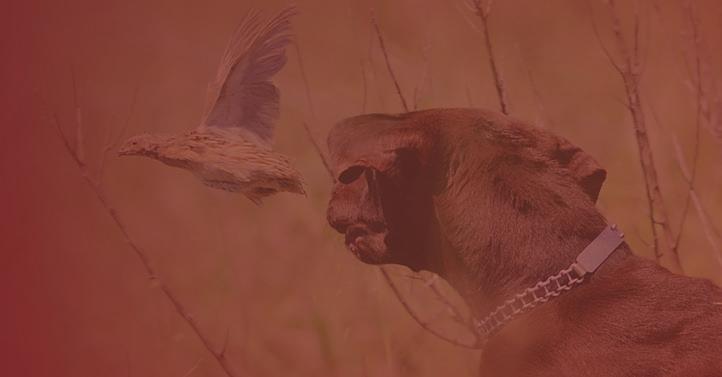
XCITEMENT among
Texas dove hunters always spikes as August fades to September, because they know good times and hot barrels are just around the corner. Opening day of dove season begins 30 minutes before sunrise on Sept. 1 in the state’s North and Central Zones; Sept. 14 in the South Zone.
Dove season is the first domino to tip in a long line of hallowed hunting seasons that will come and go between now and next spring. More than 1 million Texans will head to the outdoors in the meantime, including close to 300,000 men, women and youngsters who call themselves dove hunters.
As hunter participation goes, dove hunting ranks second only to deer hunting. It represents a plump cash cow that pumps more than $452 million annually into the state’s economy, much of it spent in rural communities that roll out the red carpet to shotgunners each year.
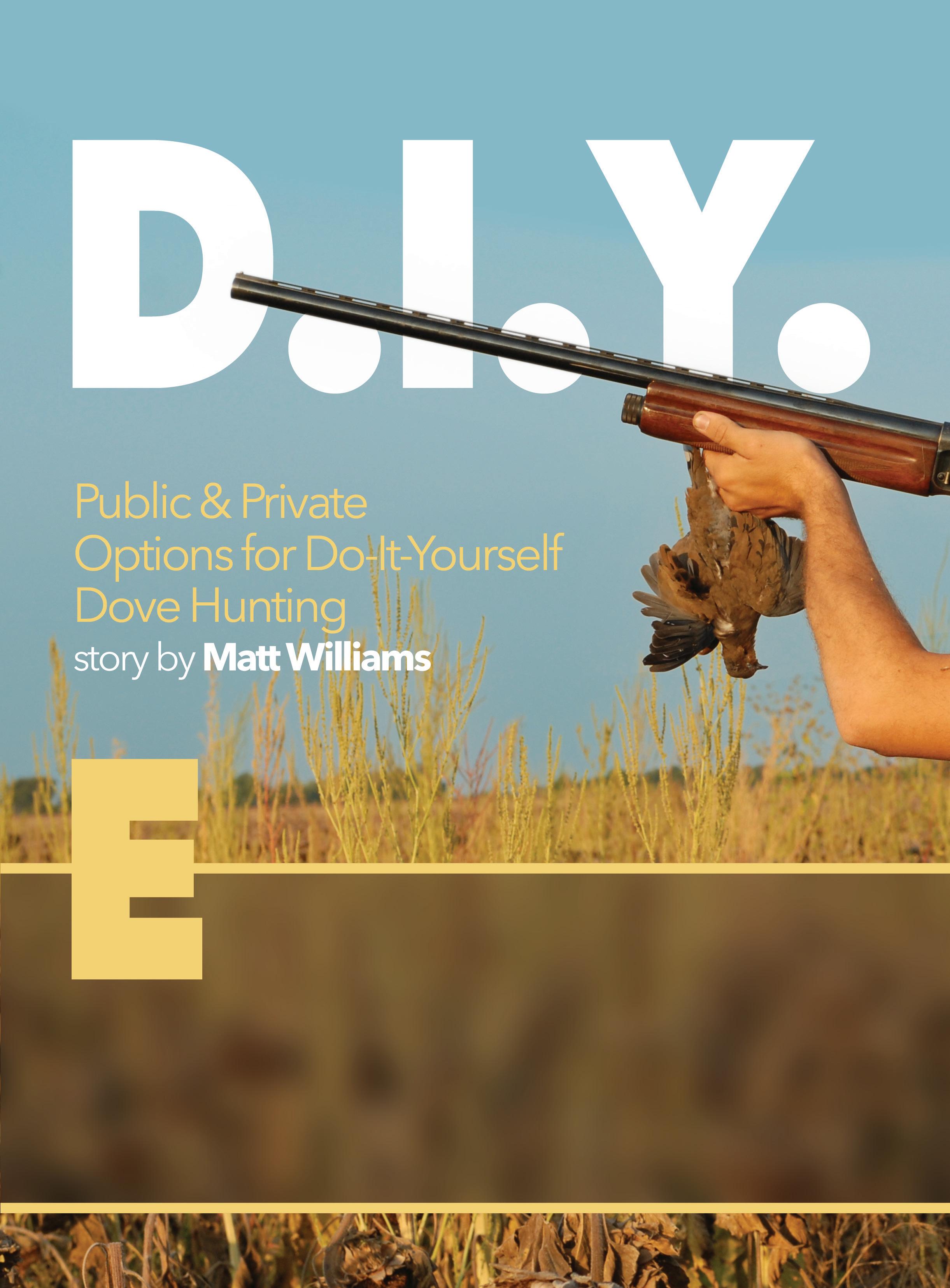
One of biggest annual celebrations happens in Coleman, where dove hunting generates about $5 million annually for area businesses. The local chamber of commerce throws a party for dove hunters each year at the Bill Franklin Rodeo Grounds. Fittingly called the Coleman County Dove Fest, the gathering features a catfish dinner with raffles and multiple shotguns awarded as door prizes. Passes are $20.
If it sounds like dove season is a big deal in Texas, that’s because it is. Even in a poor year, Texas dove hunting is way better than most states thanks to abundant populations of birds and a wealth of places to hunt them on private and public lands.
Going Private
One of the most attractive things about dove hunting is it doesn’t cost a lot to play the game. There are dozens of reputable outfitters across the state who lease property in good dove country.
Expect to pay $75 to $200 per day for a day hunt on private land, possibly more or less depending on the area of the state, date and services rendered. Others offer inclusive packages that include lodging, meals and bird cleaning for a steeper price.
Good outfitters will have pre-scouted fields and should be able put you in position to have a chance to bag a few birds, but they can’t work miracles. Doves are challenging targets to hit. Plus, the migratory birds are weather and pressure sensitive. Just because a field is buzzing with birds one day doesn’t necessarily mean they’ll still be there the next.
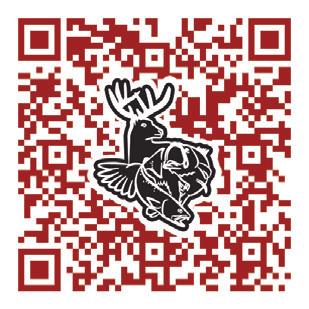
The best hunting is always where the doves want to be. Places with abundant forage like harvested grain fields, sunflowers or goat weed patches are magnets for doves, as are watering spots like tanks or ponds with plenty of bare ground along the edge. e Texas Dove Hunters Association’s website (texasdovehunters.com) is a good starting spot to shop for a dove hunting trip. e TDHA maintains a lengthy list of out ers divided by hunting zones. Most list the county, acreage, available facilities and whether or not you’ll have the option to hunt around grain, water or both.

Hunting in areas of the state with rich histories of holding lots of birds is sure to boost the odds of enjoying a good shoot. Brown, rockmorton, Coleman, Taylor, Medina, Bexar, Uvalde, Williamson, Bell, Karnes, Live Oak, Starr, Hidalgo, Cameron, Atacosa and Matagorda are among the top dove hunting counties.
Going Public
Hunting on Texas Parks and Wildlife’s private lands dove and small game leases is even less costly. TPWD has 106 private lands leases totaling more than 38,000 acres available this year, according to Kelly Edmiston, TPWD public hunts coordinator. e leases, which range in size from 60 to 2,000 acres, are situated in areas with good dove habitat.
Season long access requires a $48 Annual Public Hunting Permit available where licenses are sold. e permit provides annual access to nearly 1 million additional acres of public hunting land.
Hunters are required to register when entering or leaving these dove leases using the My Texas Hunt Harvest mobile app on the department website, tpwd.texas.gov/ huntwild/hunt/hunt-harvest-app/dove.
Many of the dove leases are within a short drive of the Dallas/Fort Worth, Houston/ Beaumont, San Antonio/Corpus Christi and the Austin/Waco areas. To review the public dove leases, check out tpwd.texas.gov/ huntwild/hunt/public. e properties are shown as clickable gold stars on the interactive map. e key to success on any public land is scouting ahead to nd areas the birds are using to feed frequently. Some of the best national forest hunting happens around new clear cuts — places where tall timber has been removed and the open ground le behind has grown up seed bearing native weeds and grasses like goat weed and dove weed.
Another public option is hunting on national forest property around eastern Texas. Some areas can be accessed for free. Others are on state managed wildlife management areas that require hunters to have the APHP.
Doing Doves Right
ere are a number of things hunters can do to help increase their chances of having a successful hunt and pleasurable experience in the eld. Here’s a random list:
Field Tips
• SCOUT: Scout hunting areas ahead of time to nd out if birds are present and learn something about their ight pa erns.
• PICKING A SPOT: Sit in the cooler shade whenever possible, preferably with the sun at your back. Hunting with the sun behind you will make it easier to see incoming birds and more di cult for birds to see you.
• BE MINDFUL OF MOVEMENT: Doves have exceptional eyesight and they become inherently spooky once shot at. Wear drab clothing and be still when birds are approaching. Keep your face downward until the last second.

• BE MOBILE: Don’t hesitate to change hunting positions if doves are consistently ying out of range, but don’t infringe on others.
• USE PREMIUM AMMO/CHOKE: Premium ammunition will pa ern be er and may eject easier from autoloading shotguns than cheap shells. No. 7 1/2 to No. 8 are good shot sizes for doves. Improved, skeet or modi ed cylinder chokes are good for dove hunting.
• DECOY: e spinning wings of a battery-operated dove decoy will sometimes lure passing birds close.
• DON’T LITTER: Always pick up spent shot shells and other trash before leaving your hunting spot.
• FIND YOUR BIRD: Mark the location of downed birds immediately. Make every e ort to locate it before shooting another.
• CLEAN AND CARE: Keep harvested birds away from re ants and clean them promptly a er the hunt. Bring along an ice chest and plastic freezer bags to keep cleaned birds cool.
Staying Legal
• DAILY LIMITS: Each hunter is allowed 15 doves daily. A limit may include all 15 mourning doves, 15 white-winged doves or a combination of two, but no more than two white-tipped doves. You can’t kill a limit in the morning and another limit in the a ernoon.
• DON’T CO-MINGLE BIRDS: Keep your birds separate from other hunters in case you get checked by a game warden before reaching your nal destination.
• SHOTGUN PLUG: Pump and auto-loading shotguns must be plugged to accept no more than three shells, including one in the chamber.
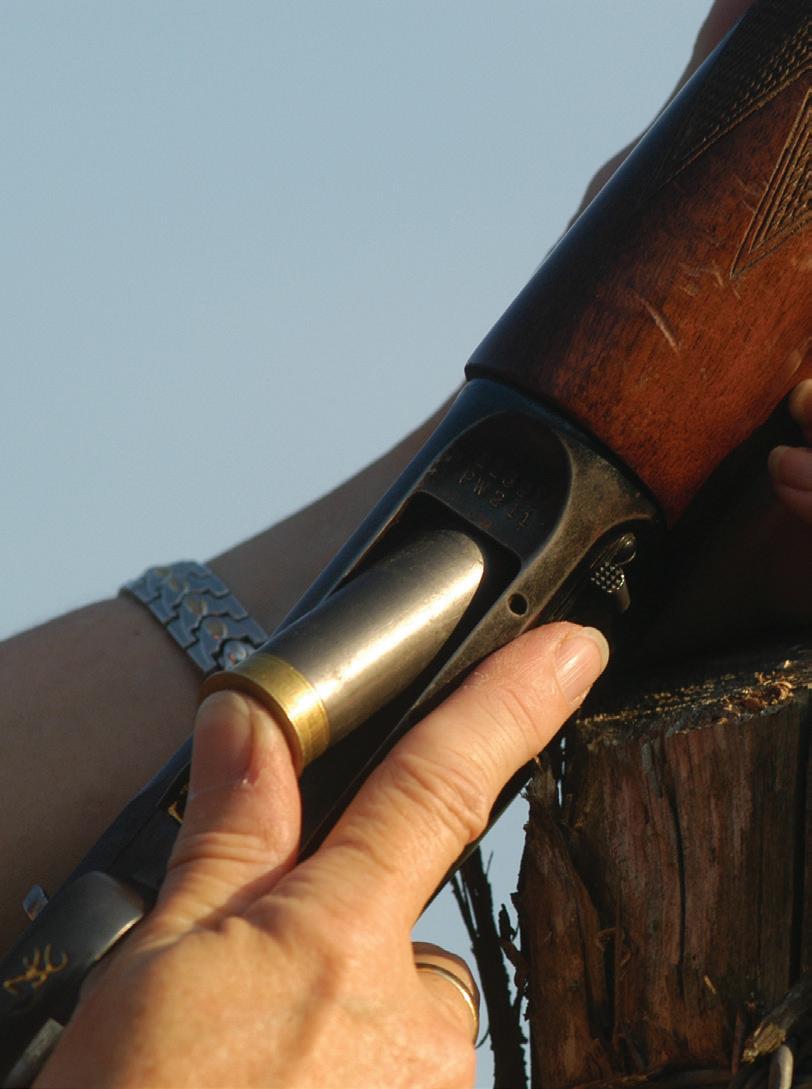
• HUNTER ED & LICENSE: Hunter education certi cation is required of every hunter in Texas (including out-of-state hunters) born on or a er Sept. 2, 1971. Hunters are required to carry proof of certi cation while in the eld. All dove hunters need a valid Texas hunting license and migratory game bird endorsement; hunters under 17 are not required to have the endorsement.
• AVOID BAITED AREAS: It is illegal to hunt migratory birds around areas that have been baited. If you suspect an area has been baited it would be wise to leave before the shooting starts and contact a local game warden. Ignorance is no excuse.
• LEGAL SHOOTING HOURS: Legal shooting hours are 30 minutes before sunrise to sunset, except during the special whitewinged dove season, noon to sunset.
• TRANSPORT DOCUMENTS: A Wildlife Resource Document is required anytime you give your birds to another hunter for transport. e document should list the shooter’s name/address/hunting license number, receiver’s name, number of birds and the place of harvest. Handwri en WRD’s are acceptable.
• BONUS EURASIAN DOVES: Eurasian collared doves are exotics that don’t count towards your limit. Leave the feathers on all collared doves for identi cation purposes until reaching your nal destination, just in case you get checked by a game warden.

Playing It Safe
• STAY HYDRATED: Be sure to bring plenty of cool drinking water along to stay hydrated. e same applies for dog handlers. An active dog can overheat quickly in hot temperatures.
• LOOK OUT FOR OTHERS: Always know what is in front of and beyond your target. Never shoot in the direction of other hunters.
• DON’T SWING ON GAME: Swinging on game hunting accidents usually happen when the hunter is tracking a dove or quail, then pulls the trigger as the muzzle crosses paths with another individual they may or may not know is there.

• PLAY SOME DEFENSE: Never assume anything. Always let other hunters around you know your whereabouts and be mindful of what is going on around you.
• EYE/EAR PROTECTION: Wear some eye protection while in the eld to help prevent injury from stray pellets. Shotgun pellets can pierce the skin or put out an eye from 200 yards or more. Ear plugs will dampen the sound of a shotgun blast.
• BUGS AND SNAKES: Spray clothing with a good insect repellent to deter chiggers, ticks and other biting insects. Good snake boots are advised in ra lesnake country.
VERYTHING IS BIGGER IN TEXAS.”
In the world of shing that slogan is most o en used for the massive largemouth bass that inhabit the state’s reservoirs or the huge red sh along the coast.
It’s not o en associated with pan sh, but it should be. ere are super-sized opportunities for a wide variety of pan sh around the state and has a big following among angling veterans. It also has a new generation of anglers speci cally targeting them in streams, rivers, and ponds with intense fervor.

Andrew Austin, known as “ e Texas Naturalist,” on Instagram and host of e Wildlife Experience podcast has a background in biology that deepens his appreciation of these sh.
“Texas has pan sh biodiversity, and you can catch them everywhere from neighborhood ditches to reservoirs and clear streams in the Hill Country. ey’re a lot of fun to catch and when you get into it deeply, di erent aspects like y shing or targeting certain weight classes in specific waterways make it a real challenge. And best of all, it’s a great way to get a kid started fishing,” he said.
We’re going to look at Texas top species and give you a few tips on where and how to catch them with a particular emphasis on rod choice.
CRAPPIE: Crappie are abundant and big, especially in the eastern third of the state. The four-pound black crappie state record was taken on Toledo Bend and the massive 4.56-pound white crappie came from Navarro Mills.
Other top lakes include Lake Conroe, Lake Fork, Sam Rayburn, Ray Roberts, and Livingston.
Most crappie in Texas are caught around docks or manmade brush piles where they gather in large numbers. The usual offering is a live shiner, but jigs are also very effective. Rig a 1/32 or 1/16-ounce shiner or crawfish pattern jig on a 6’9” St. Croix ultralight/fast Panfish Series Spinning Rod and you can’t go wrong. If you want to try your hand at the dock shooting technique, the St. Croix Avid Pan sh 6’9” medium-light power, extra-fast action model was designed for it. ese sh ght hard, gather in large concentrations and are the preferred species of a growing number of anglers. With the state record a whopping 2.02 pounds, they also get big here.
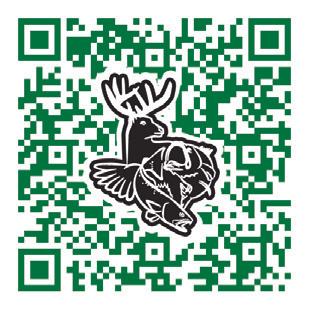

BLUEGILL: Bluegill are abundant from the Texas Hill Country to the Pineywoods with the strongest concentrations of larger sh in that eastern corridor.
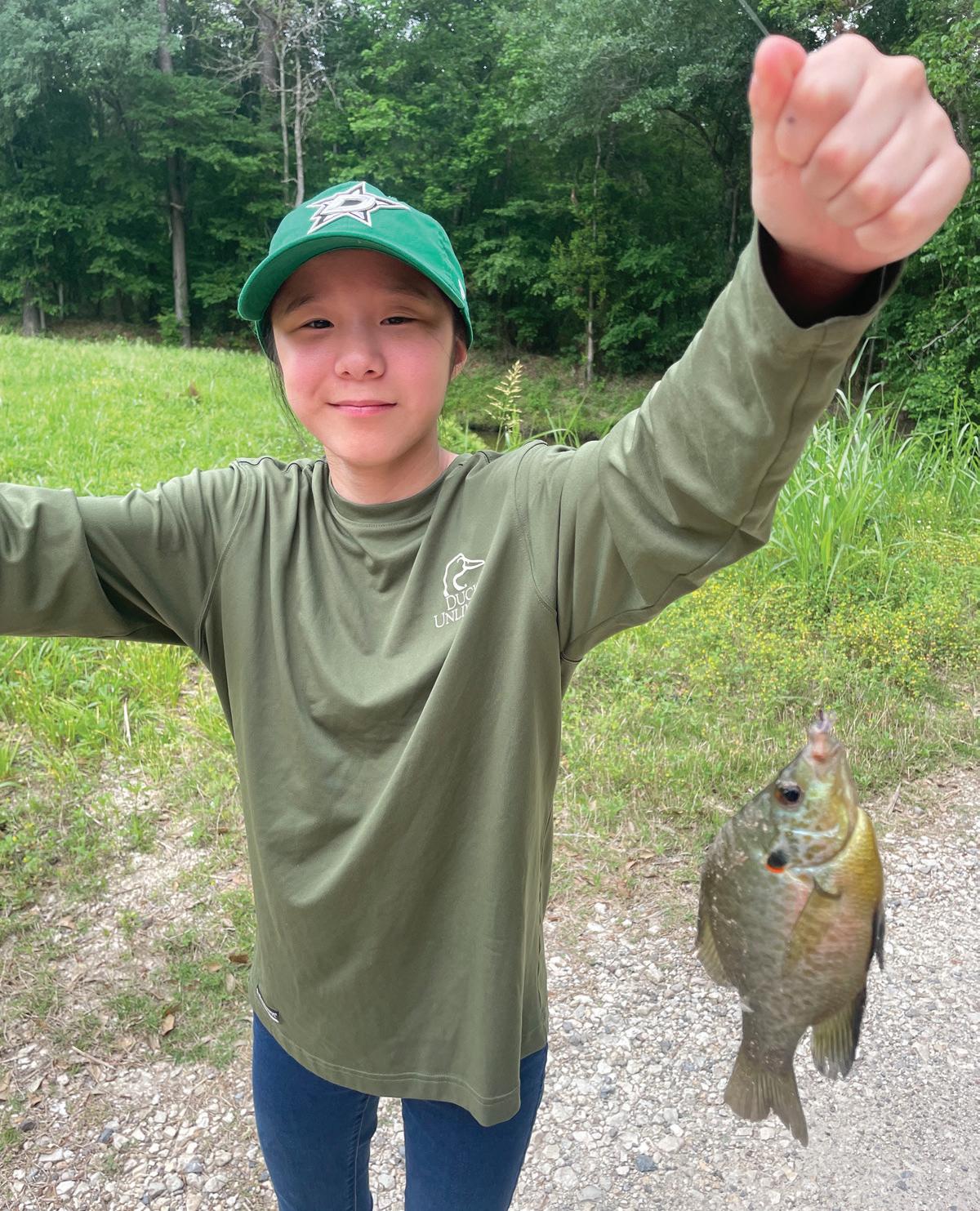

A hunk of nightcrawler under a popper is hard for bluegill to resist but small spinners and curl-tailed grubs are also good choices. Rig them on a 7 foot, light/extra fast St. Croix Pan sh Series Spinning Rod for great results. If you want a li le shorter, lighter rod, try the 6’4 light/fast action model in the same series.
LONGEAR SUNFISH: ese are arguably the most beautiful of all sun sh with bright colors and the signature long gill covering. And they are very aggressive sh that will take y poppers, so plastic worms shed for bass and even small spoons. ese scrappy sh are found in most of the state.
Longears prefer areas with slack current and are o en found around eddies in streams or in bayou backwaters where they gather in schools. Try a tiny popper or oating rubber-legger for fun results on a 7-foot, 3 weight Imperial USA Fly Rod from St. Croix.
You can certainly get away with catching them on a two weight but even small longears ght hard and you want to be able to get them away from thick brush and other cover quickly, so a li le more strength with the three weight is recommended.
REDEAR SUNFISH: Texas’ top redear weighed a whopping 2.99 pounds and while that almost seemed like an anomaly, there are lots of big, fat ones still out there. ey are widely distributed in the state.
According to Texas Parks & Wildlife Department (TPWD) o cials, redear sunsh o en utilize snails as a major food item, hence the common name “shellcracker.”
“However, insect larvae and cladocerans may also be found in their diet. e species is usually found near the bo om in warm water with li le current and abundant aquatic vegetation.” ese guys are super hard ghters that don’t strike the surface nearly as much as bluegills. Fly anglers typically catch them on nymphs and other sinking ies.
St. Croix Pro Brian “Bro” Brosdahl said his favorite rod choice is the St. Croix Legend Elite Pan sh 7’, light-power, extrafast action spinning rod.
“It’s simply the best multi-purpose pansh rod for long, bomb casting, searching, and slip bobbing. It’s gentle on a slab crappie’s fragile mouth, can feel every nibble, quiver, or shake, and has the backbone to pull giant bluegills out of the jungle, with enough muster to defeat incidental catches of larger bass” he said.
And those do tend to hang around bluegill in Texas.
RIO GRANDE CICHLID: ese rather odd-shape, yet beautiful spo ed sh are considered a prized trophy by Texas pan sh enthusiasts.
According to TPWD o cials, the distribution of the Rio Grande cichlid in Texas appears to have originally been limited to the lower reaches of the Rio Grande. However, several populations have been established in river drainages of Central Texas’ Edwards Plateau including the San Marcos, Guadalupe, San Antonio, and Colorado rivers. We have also veri ed populations in the northern tier of the Houston metro area.
Cichlids love insect-pa erned ies and are a sucker for any small craw sh-pat- terned so plastic.
An 8-foot 4 weight Imperial USA y rod is a good choice for big cichlids as is the 7’3 medium-light extra fast St. Croix Pan sh Series Spinning Rod.

For The Kids
You can’t go wrong starting a kid shing for pan sh.
A li le red, white, and blue bobber and a small hook rigged with an earthworm can get you into a lot of action on most water bodies.
Dustin Warncke is a father, outdoor writer and works with kids at camps to get them started in the outdoors. He has an important piece of advice for taking kids on a pan sh expedition.
“Bites from bluegill and other varieties of pan sh might be rather light. I watch the line carefully. If it makes a steady move in or out from where the bait se led in my cast I usually try to set to hook because the sh usually has it in its mouth at that point,” he said.
Warncke said you never want to set the hook too hard, so as to pull the bait and hook out of the sh’s mouth too soon, but don’t be afraid to be direct and assertive with the hook set. A short quick jerk should be ne.
“If kids have an issue se ing the hook at the right time with li le sh like these, it can be frustrating at times. Fishing, a er all, is a game of patience and fun so when my son was younger, I would hold the rod and reel and wait for the bite, set the hook, and hand the rod and reel to him. Kids enjoy reeling in and “ ghting” the sh more anyway.”
Kids At Heart
Seeking pan sh can be as simple as soaking worms under a bobber or y shing in super clear water for big shy cichlids. At the heart of all pan sh pursuit is fun and we tend to think anyone who truly loves pansh is still a kid at heart. ey are at the root of many of our shing experiences and if you get the right gear and nd the sweet spot on your favorite stream, lake or pond, there is Texas-sized action to be had for the whole family.


“You need to watch ‘Murder Mountain.“
POKEN SOMBERLY FROM A National Forest Service game warden, those words got my attention. As we conversed at the National Wild Turkey Federation convention in Nashville, I asked if he ever worked Humboldt County, Ca.
And as I related a personal experience from there nearly 20 years ago, he recommended the six-part Netflix series.

“There are missing people, murders, and drug trafficking. You were lucky to get out,” he said.
After studying a map, I was probably 10 miles or so from the actual Murder Mountain documented in the series but deep in a county with many missing people, murders, and mayhem.
In 2002 my father and I set out on a mission to explore the Pacific Northwest after my great white shark cage dive adventure in San Francisco. I had heard a bit about pot growers in the area but nothing that seemed worse than where I live in East Texas.
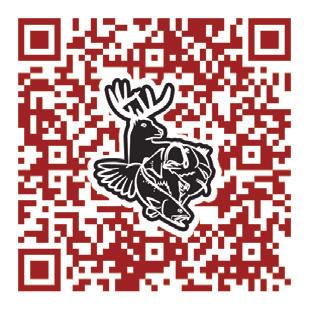
Boy was I wrong.
One night on our trip we set out to try out our new night vision goggles and to record night wildlife sounds in the stunningly beautiful mountains in the Trinity e moon was full, so visibility was high. en I saw it.
Alps. When I tell you this was in the middle of nowhere it might be hard for you to imagine just how far unless you’ve been to that part of the world.
We pulled up a few minutes a er the sunset and planned to stay through the night.
As Dad started taking out the equipment, I walked over to a good viewing spot to look down into the valley with the night vision goggles.
If anything came into the clearings below, we should get a glimpse, I thought.

A beam of light shot up toward our position.
“Dad, did you see that?” I asked as I pulled o the goggles.
“What?” e drug activity warning hit me, and I readied to retreat. I knew whoever was down there was not listening for bugling elk like we were. is was on the other side of the mountain road. Someone had been signaled. We shoved our gear into the SUV and sped out of there, but by the time we hit the road so did the truck from the other side. ey were headed straight for us. At one point I was going 80 down the mountain, and they were just a few feet away—literally an arm’s length from hi ing us.
“A light beam just shone toward us,” I replied.
“I didn’t see it,’ he said.
Neither did I know that the goggles were o . I put them back on, and a few seconds later I could see the light beam moving up toward us. I took them o and couldn’t see the light.
Immediately I knew that someone was below, traveling with night vision and using an infrared light only visible with night vision technology.
Just as I shouted for Dad to throw the gear back in the SUV, headlights of a vehicle came on about 3/4 mile ahead of us.
We were on one side of a logging road that cut across a mountain.
I knew that was their goal.
A er what seemed like forever, we got to the base of the mountain on one of the main roads going toward Willow Creek. As soon as we turned back toward that li le city, they turned back up the mountain.
Over the years I have learned a few things about staying safe in the woods from people with bad intentions. Please share this with others.
It could save their lives.
BAD VIBES: If you feel bad about going into an area don’t go. I believe sometimes this is the Lord telling me to stay away. You may not believe that, but just call it a “gut feeling” and go with it.
NEVER ALONE: As much as I love to be in the distant forest alone with my camera—don’t you do it. Always bring someone along. Preferably someone who is experienced in the woods. You are far more likely to get hurt by evil people if you are alone.
PACK HEAT: If it’s legal where you are then use your Second Amendment right and carry a rearm. Make sure you are trained in its use and be prepared to do what is necessary.
Be er you defend yourself against a maniac than become a statistic. Also, carry a large knife with you. In close quarters it could save your life.
STUDY THE AREA: e Internet is a great tool for studying areas. If you nd out an area is a high drug tra cker area, for example, avoid it like the plague.
Stay away!
I have several areas I no longer frequent because of this issue.
STAY CALM: If you do encounter people in the woods who seem uneasy or a bit shi y, stay calm. Ge ing angry or showing fear is a good way to trigger someone who has violent tendencies.

TRAVEL PLAN: Leave your spouse or close friends a travel plan and let them know the points you plan to explore. Give them a time frame. Let them know to call for help if you have not returned by a certain time or day.
STRATEGIC PARKING: Always park your vehicle facing out of the area as you check out. In a tight spot, you don’t want to have to back up and turn around during a retreat. Also park in a spot in a clear area that you can see from a distance. If someone is waiting on you or has moved into the spot, it will give you a chance to assess the situation and prepare.
DON’T BE A HERO: If you see strangers poaching in the woods at night for example, don’t be a hero and try to stop them. ey are armed and probably will use their weapons on you if you try to stop them. Call and report activity to local game wardens and get out as quickly as possible.
BUY AND CARRY A BEACON: I carry a Spot-X beacon that will alert all rescue personnel at the touch of a bu on. Don’t rely just on a cell phone. Get a beacon of some kind too.
TALK TO LOCALS: Not all information is on social media. Talking to locals in a gun shop or sporting goods store can give you good intel on the local region.
Seeking wildlife in the wild is one of the most exciting things a person can do, but it has its share of dangers. Keep these tips in mind and you should be able to avoid any serious trouble.
(TF&G Editor-in-Chief Chester Moore is also host of the award-winning podcast Dark Outdoors, available on all major podcasting platforms. Subscribe to this TF&G-sponsored podcast for many wild tales of danger in the great outdoors.)


ISHERMEN ARE KNOWN FOR THEIR TALL TALES,
but deer hunters are equally as liberal with exaggeration and hyperbole. We are also prone to thinking we have it all figured out when in fact the deer have us pegged much better than we understand them.
Here are some tips on keeping things in perspective when deer hunting and realize each hunt is an opportunity and few of us will ever shoot the type of deer you see on hunting television programs unless we can afford to go to the mostly high-fenced ranches where such deer dwell in large numbers.
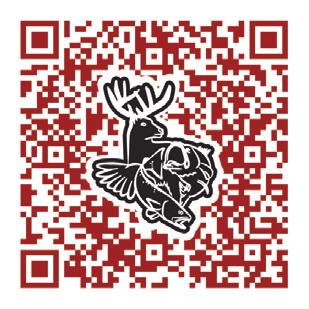
Let’s take advantage of good opportunities presented to us.
BIRD IN THE HAND: If you have an opportunity to shoot a decent buck, take it. Don’t wait around for the mythical 40-point buck of your dreams because chances are it will not come out. East Texas hunters would be wise to take the first legal buck that steps out. Your best shot at getting a buck is on opening weekend or during the rut (it is sweet if they coincide), so take the opportunity that comes your way.
I’ll never forget passing on a huge, older six-point buck on our family’s old McCullough County lease. It was during bow season, and I had it eating only 10 yards away for 15 minutes. I knew there was a big eight-pointer around, so I waited.
Well, the bigger buck came out, stuck his head out of the bushes, looked on the trail right past me and bolted.
A bobcat was coming down the trail and spooked it.
Don’t let a bobcat spook a nice buck away from you. Take the safe, ethical shot and enjoy some fresh backstrap this weekend.
TIMING: You can’t kill a deer if you’re not in the woods. If you get to your blind early and let things se le before they start moving and then stay until dark your odds of scoring, go up astronomically.
Several studies show that most large bucks that haven’t turned nocturnal move between 10 a.m. and 2 p.m. when hunters are back at camp. Don’t be at camp. Be in the woods if possible.
You might even want to consider se ing a timer on your feeder (if you have one) to go o about noon. I can pre y much guarantee you no one else in the area will, and it could give you a needed edge.
DON’T STINK: If a deer sees you it might leave. If it hears you, it might bolt away and come back. If it smells you, it is over. e nose of the whitetail is incredibly sensitive and is their rst line of defense.
Position yourself downwind of where you think the deer will come and use scent eliminators. A small dose of a masking scent does not hurt either.
FRONTAL ISSUES: Deer hunters love to hunt a er cold fronts but according to Ken Swenson of the Swenson Whitetail Ranch in Orange eld we might be missing out before fronts arrive.

“Our deer absolutely increase their eating in a big way before a front arrives. A couple of days in advance, they eat heavily and then it slows down a er the front comes,” he said.
His deer are captive and fed high protein diets, but they are still whitetails and go through all the same cycles as other deer.
“ is certainly made me question my thoughts on cold fronts and deer,” Swenson said. e observation makes sense as animals instinctively feed in advance of plummeting temperatures.
BUCK BRUSH: Texas bass shermen love to sh in coralberry or “buck brush” on reservoirs when water levels are high. e name should give it away but the thicket it creates along with the nutrition it provides makes it a favorite among deer hunters in the region.
Another good one is yaupon (the bush that produces the pre y li le red berries).
Humans consider it a nuisance, but deer love it. Yaupon thickets are decent places to hunt.
If you can nd yaupon on the edge of a eld, you will see deer feeding on it fairly frequently. It’s something that is easy to key on for hunters and is more readily identiable than many other plants in the eld. Moments: ere are few things more peaceful than being in the woods. A er all, that is what it was like in the beginning. ere were no asphalt roads, cities, and technological gadgets. It was just the creation and its incredible majesty.
Never let the drive to shoot a big buck deter you from enjoying the sight of a redtailed hawk swooping down to take a rabbit or a beautiful red cardinal si ing on a limb outside your stand.
If you will only be pleased by pulling the trigger, then your happiness will be eeting. If, however, you choose to take in your surroundings and be thankful for the li le things in the woods you will have a sense of joy that lasts far beyond the day’s hunt.
Now, if that big buck does come out, your day will be all the be er.











